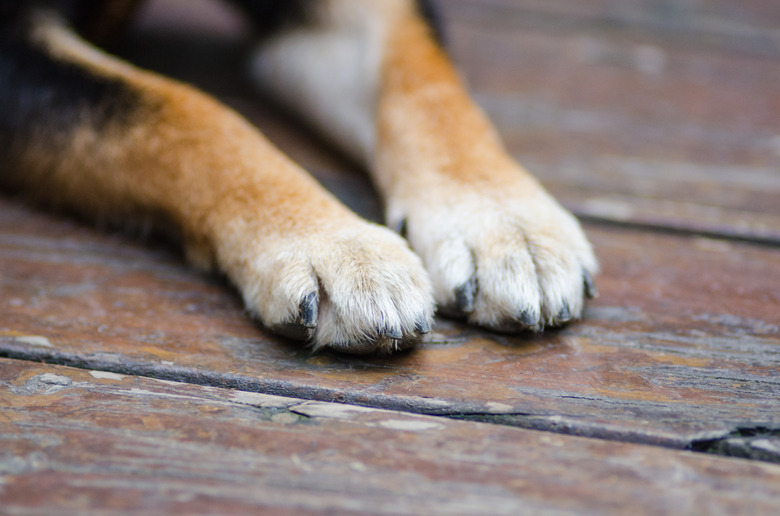Canine Paw Abscesses
Your dog is always on the go, loves to run, and enthusiastically greets you at the door when you get home. But a dog abscess on her paw can quickly sideline her and leave her in pain. Abscesses happen to many dogs, but they're also fairly easy to treat. When you know how to recognize an abscess, you'll be able to get your dog appropriate treatment quickly, so she starts feeling better soon.
Understanding a dog abscess
Understanding a dog abscess
Dogs can develop irritating abscesses anywhere on their body, according to Dogster. Abscesses, which are collections of pus, are caused by a variety of issues, including parasites, bacteria, and even bites. The infection is localized to the abscess pocket, which helps to keep it from spreading to the rest of the body.
Abscesses can present in a number of different ways. When you're looking at a paw abscess, you may see a red bump on a dog paw. Often, you can see swelling under the skin. The area will feel squishy and warm.
In most cases, abscesses are painful, so be careful when inspecting your dog's paw, since he may not be fond of having you touch the area. However, some dogs are more tolerant of abscesses and may not react in pain if you palpate the area.
Dog paw infection between toes
Dog paw infection between toes
There's another type of abscess that can affect your dog's paws. Called an "interdigital furuncle," these abscesses are like a severely infected pimple or boil, states Merck Veterinary Manual. A deep bacterial infection most often causes this dog paw infection between the toes.
Breeds with short, bristly hairs in between their toes are the most likely to develop this type of abscess, since the short hairs are often forced backward as the dog walks, resulting in ingrown hairs and a bacterial infection. Breeds such as Labrador Retrievers, English Bulldogs, and Chinese Shar-Peis are particularly susceptible to these abscesses because of the short hairs around their toes and their prominent toe webbing.
These abscesses often start as a reddish rash and small bumps either in one area or over the entire webbing between the dog's toes. These bumps then develop into small dog pustules that can rupture under pressure, leaking bloody fluid. These furuncles are often painful, and an affected dog may limp on the problem foot.
Treating an abscess
Treating an abscess
Some abscesses will require veterinary treatment, while more minor abscesses can probably be treated at home. Either way, you should check in with your vet for a recommended treatment plan. Your vet will probably run some tests to determine the cause of the abscess, and then prescribe appropriate antibiotics to help clear up the infection.
In some cases, your vet may need to drain the abscess, states Dogster. He or she will make an incision into the abscess to drain out the pus and relieve the pressure on the area. For more severe or larger abscesses, surgery may be necessary.
If your vet decides that you can treat the abscess at home on your own, then it's important to be diligent about keeping your dog's paw as clean and dry as possible. You will need to flush out the abscess several times a day, and your vet may give you a topical cream to apply to the area. Be sure to give your dog the entire course of antibiotics, even if her paw looks all cleared up before you've reached the last dose. Giving a partial dose of antibiotics may allow the infection to start up again, and the abscess can come back.
Call your vet if your dog's abscess comes back or if it doesn't get better within a few days of treatment.
Always check with your veterinarian before changing your pet's diet, medication, or physical activity routines. This information is not a substitute for a vet's opinion.
